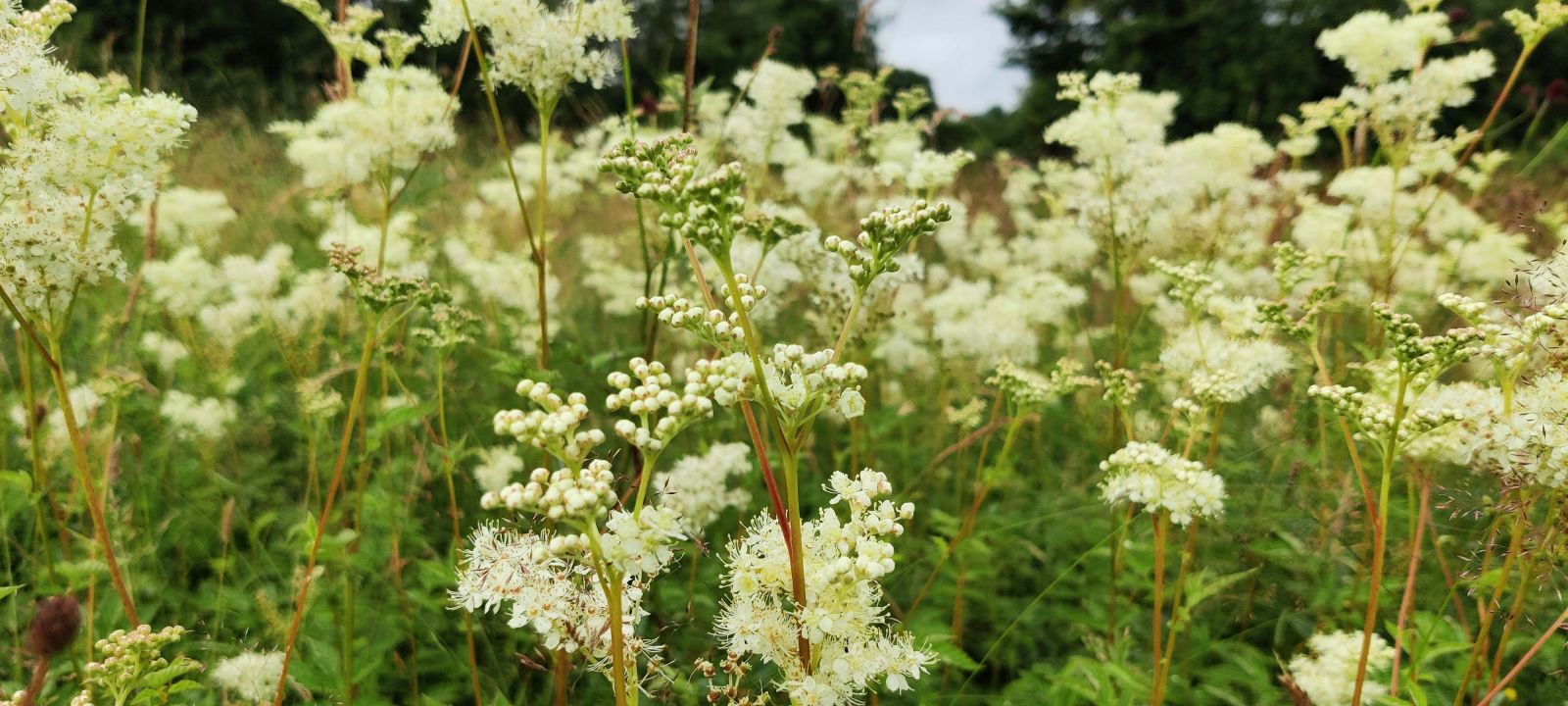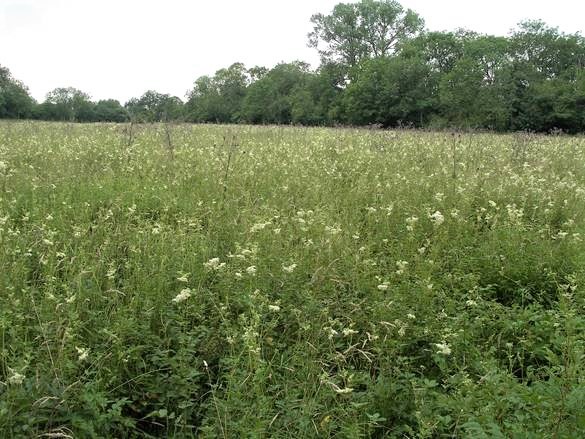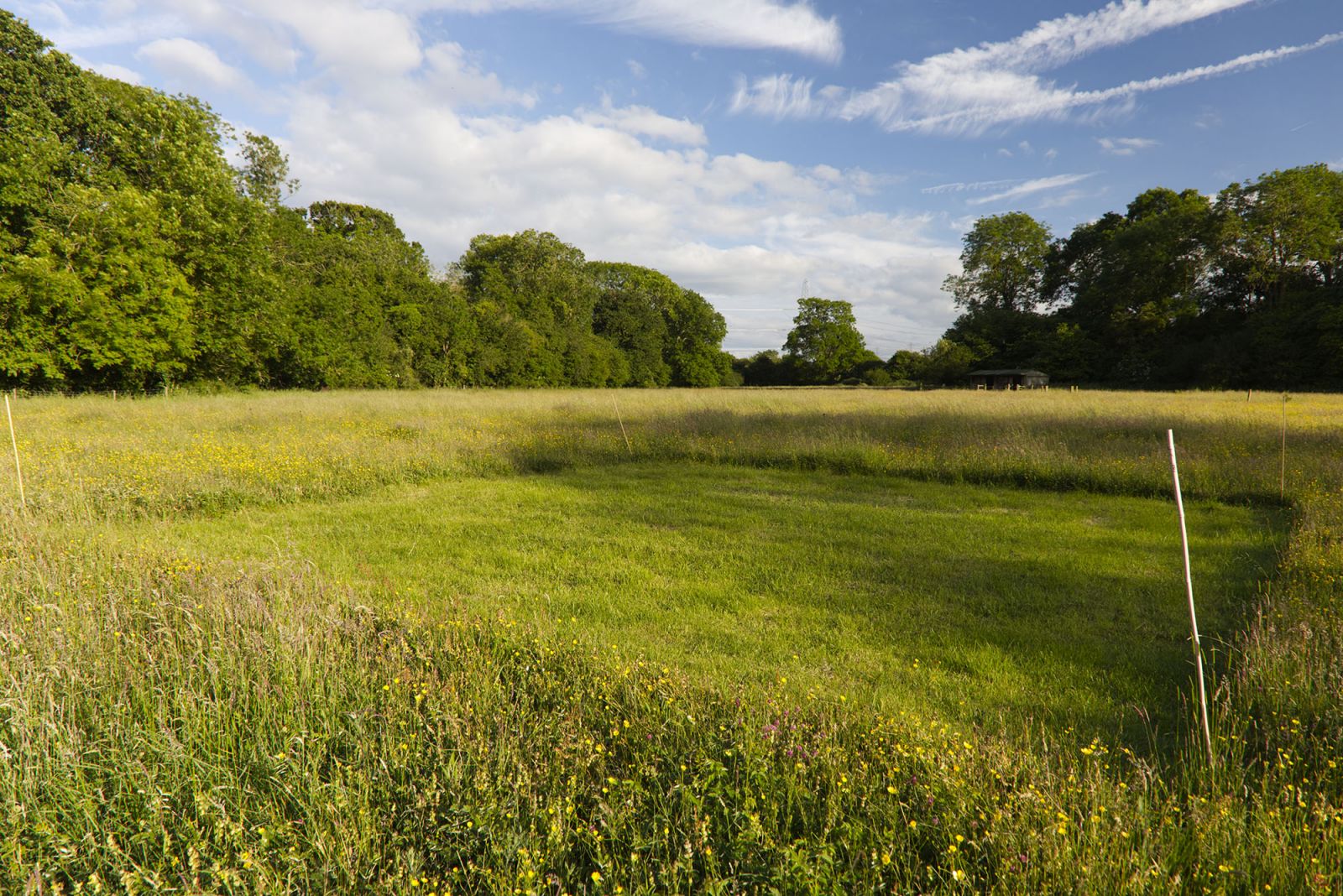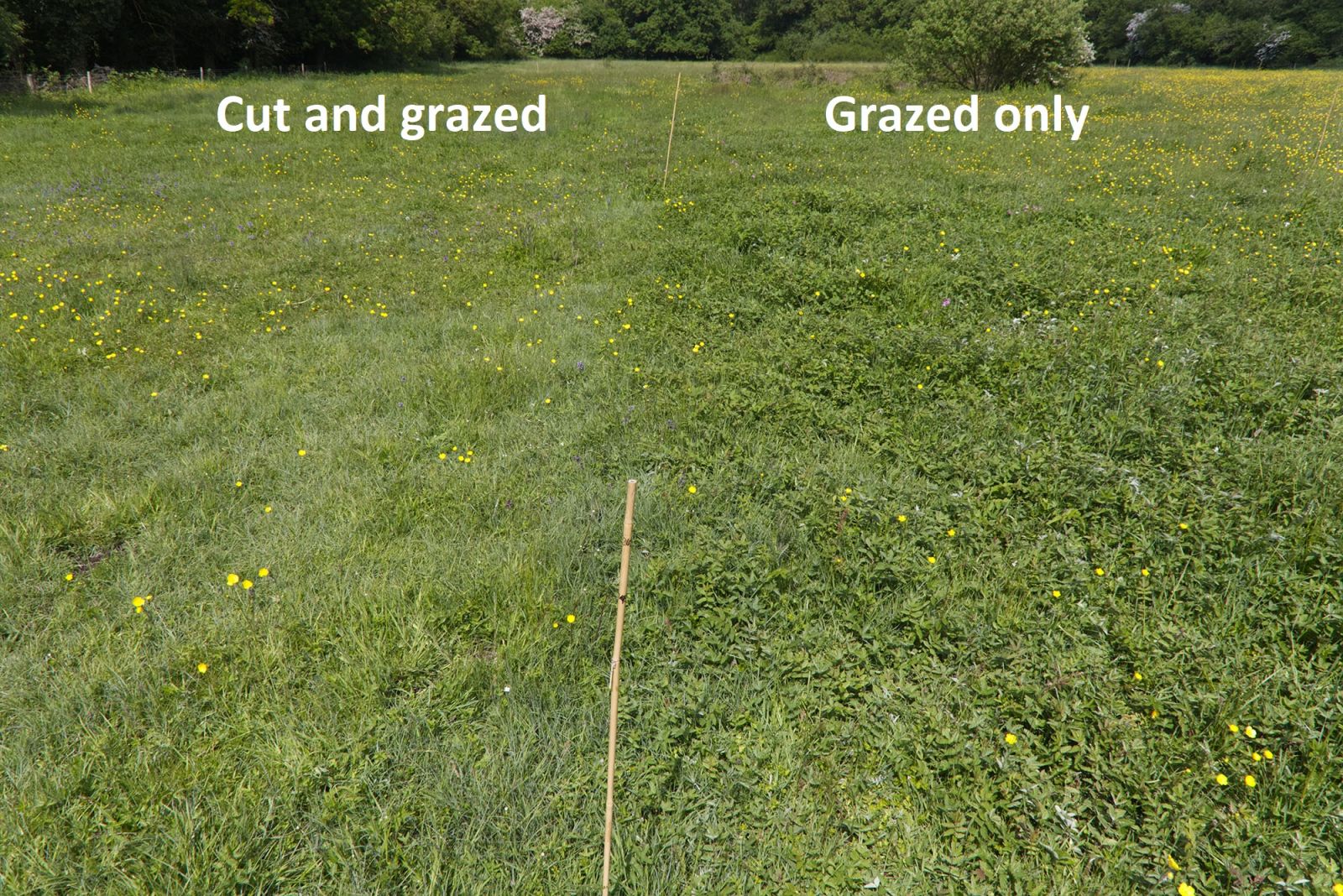 Photo of meadowseet by Vicky Bowskill
Photo of meadowseet by Vicky Bowskill
On a floodplain meadow, there is a delicate balance between different plant species which needs to be maintained in order to preserve biodiversity. It is sometimes necessary to control the more dominant species which, if left unchecked, can take over a site and reduce the quality of the hay crop and the species diversity. Meadowsweet (Filipendula ulmaria) forms a part of many meadow swards but under certain growth conditions it can spread rapidly and create dense stands which shade-out smaller growing meadow species. So, although a carpet of meadowsweet flowers, looking like white fluffy clouds, is a wonderful sight – it is something that we have been trying to keep under control at one site in Bedfordshire.
The Floodplain Meadows Partnership and Bedfordshire, Cambridgeshire and Northamptonshire (BCN) Wildlife Trust have been experimenting at Fancott Woods and Meadow SSSI, exploring how to control its overly dominant meadowsweet and restore the previously species-rich community. There is a lot of research on the benefits of traditional meadow management – an annual hay cut followed by livestock grazing – for maintaining an open and diverse sward. The wet summers of 2007-2009 led to a big expansion of meadowsweet at Fancott and it was thought that the current management of only grazing in summer with no hay cut alone would not be enough to check its expansion.
 Photo of Fancott by Graham Bellamy
Photo of Fancott by Graham Bellamy
In 2009, an experiment was setup to see how two different meadow management approaches would affect the grassland at Fancott: a) continuing with grazing only, b) introducing an annual hay cut followed by grazing. This experiment has been managed by staff and volunteers at the BCN Wildlife Trust for 12 years and the results are fantastic. You can clearly see from the photo below, there is considerably less meadowsweet in the area that has been both cut and grazed. There has been an increase in the number of plant species (i.e. diversity) found in the cut and grazed areas as well.
Thanks to this work, we are able to better advise landowners and managers of floodplain meadows elsewhere on how best to tackle this tricky plant and create more diverse habitats for the benefit of nature. We have published an article on this experiment in the Conservation Evidence journal – if you would like to read more about this work in greater detail then it is freely available here.
 An experimental 'cut' plot at Fancott Meadow. Photo by Mike Dodd.
An experimental 'cut' plot at Fancott Meadow. Photo by Mike Dodd.
 Difference between cut and grazed and grazed only. Photo by Mike Dodd.
Difference between cut and grazed and grazed only. Photo by Mike Dodd.